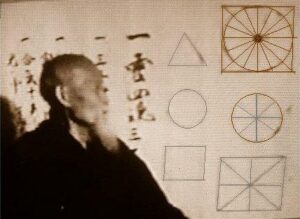 Internal strength/power is something that appears cyclically in martial arts from time to time. It’s sometimes rooted in esoteric practices and postural work and can potentially inform our practice of Aiki. In this session through several seniors with expertise in other arts and professional disciplines of therapy and biomechanics we explore internal strength from many viewpoints.
Slides from the session: click here
Internal strength/power is something that appears cyclically in martial arts from time to time. It’s sometimes rooted in esoteric practices and postural work and can potentially inform our practice of Aiki. In this session through several seniors with expertise in other arts and professional disciplines of therapy and biomechanics we explore internal strength from many viewpoints.
Slides from the session: click here
Chinese martial Arts – Simon Russell (long time practitioner of Chinese MA and Aikido)
- Listen to the audio that Simon recorded for the session
Japanese martial arts – Andrew Sunter (Aikido instructor with a history of cross training across styles / arts)
- Because there is no real mention of internal power in japanese martial arts, but there is mention of Aiki, the contention was that Internal Power (IP) is Aiki. Even then Aiki is not really well defined and there seem to be a lot of different definitions, from the physical to the esoteric. However it plays a Key part of many sword schools, Jujitsu schools, Judo and Daito Ryu. Practicing Aiki leads to Aiki body.
- One of the early references to aiki (1899) – “The most profound and mysterious art in the world is the art of Aiki. This is the secret principle of all the martial arts in Japan. One who masters it can be an unparalleled martial genius.”
Pedagogical challenges – Dan James (biomechanist and skill acquisition researcher)
- There is pedagogical challenge if want to bring IP into the Aikido dojo since traditional aikido training is paired partner practice but what we see from Chinese and older Japanese arts is that internal power needs largely a solo practice in order to cultivate it. So how can be bring solo practice to the dojo and our own practice at home?
- People can get distracted and focused on the word ‘strength’ and it becomes more about fighting which isn’t really Aiki. Danny’s contention was that IP informs Aiki but is different.
A biomechanics perspective – Dan
- In Aikido, power is relative because you are working with another physical body. If you work on your own power you can improve relative to your partner but if you can take the power / Ki out of your partner then your relative power increases significantly.
- Some of the ways to do that: Use ground power; Kinetic chain; Balance.
- Solo training needs to be tested with paired practice – we need to have both training paradigms
Aiki Body – ‘an integrated approach’ – Andrew Sunter
- At the centre of building Aiki body is building the core/hara but it’s not really explicitly taught in martial arts.
- We need to focus on engaging the core because it’s the main transmitter of power and we need to transfer power from the ground via the core to the hands with as little leakage of power as possible
-
- Engage the core
-
- Then…
-
-
- Relax – swap using phasic muscles for tonic muscles
- Extend the structure – in 6 directions
- Align the spine
- Stabilise shoulders and arms
- Switch on glute medius
- Extend up and down
-
-
-
- We can use the Rites of spring from Daito Ryu to help as it contains spiralling, winding, aiki age, aiki sage and balance
-
- Use testing to determine what is working – calibrate 0-100% of force and ensure the same tests at the same levels are consistently applied. Try different things and see how it affects the results. However, it’s not enough to do this static we need to maintain our structure under movement.With paired practice we can test this but we need to have an uke committed to giving us consistent feedback.
